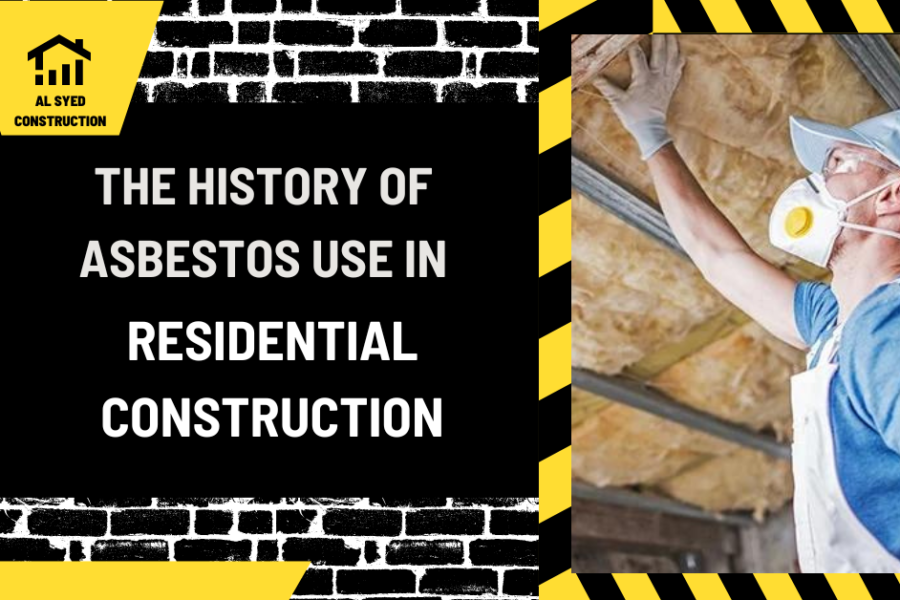The History of Asbestos Use in Residential Construction
Asbestos, a naturally occurring mineral known for its heat resistance and durability, was extensively used in residential construction for much of the 20th century. Its popularity soared due to its affordability and fire-resistant properties. However, the use of asbestos in construction has since declined drastically due to the health risks associated with exposure.
Table of Contents
Early Use of Asbestos in Residential Construction
In the early 20th century, asbestos was hailed as a wonder material. Its fibrous nature made it ideal for use in insulation, roofing, flooring, and other construction materials. Asbestos was valued for its ability to resist heat, fire, and electricity, making it a common choice for residential builders.
Peak Usage and Widespread Adoption
Between the 1940s and 1970s, asbestos saw its peak usage in residential construction. It was commonly used in products such as insulation, siding, roofing materials, and flooring. Its fire-resistant properties made it especially popular for insulating homes and buildings.
Health Concerns and Regulation
In the 1970s, concerns began to arise about the health risks associated with asbestos exposure. Studies linked asbestos exposure to serious health conditions such as mesothelioma, lung cancer, and asbestosis. As a result, regulatory bodies around the world began to impose restrictions on the use of asbestos in construction materials.
Decline in Use and Asbestos Abatement
By the late 20th century, the use of asbestos in residential construction had declined significantly. Many countries banned or heavily regulated its use in construction materials. Asbestos abatement became a common practice in older homes and buildings to remove or encapsulate asbestos-containing materials to reduce health risks.
Current Status and Continued Risks
While the use of asbestos in residential construction has significantly declined, it still poses a risk in older homes and buildings. Asbestos-containing materials can release fibers into the air when disturbed, putting occupants at risk of exposure. Asbestos awareness and proper abatement practices are crucial to mitigating these risks.
Conclusion
The history of asbestos use in residential construction is a cautionary tale of a once highly regarded material that fell out of favor due to serious health concerns. While its use has declined, the legacy of asbestos remains in many older homes and buildings. Asbestos abatement and proper handling of asbestos-containing materials are essential to protecting the health and safety of occupants.




